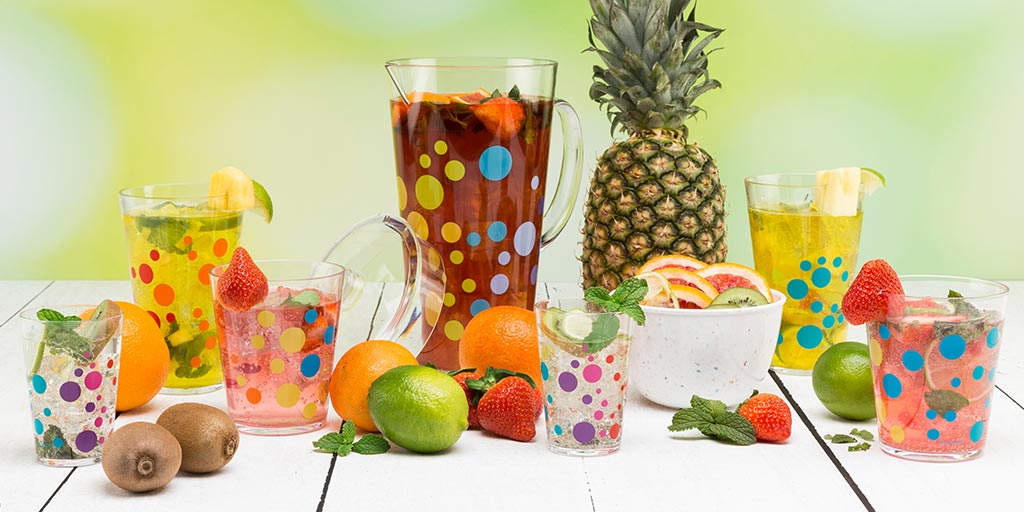From an Old-Fashioned Squeeze to the Latest Technology
You probably already know all about fruit—how it’s full of nutrients, and how you can eat it in a snack, dessert, or entrée. The USDA recommends 2 cups a day, or an equivalent amount of fruit juice. But if you prefer to drink your nutrition, you might get a little more than you bargained for. Store-bought juices have added sugar and preservatives, and may lose nutritional value from pasteurization, so they aren’t always the best choice for a clean, healthy, and refreshing drink. The solution? Make your own.
Orange juice, the most popular among juice-drinkers, is a great place to start. It doesn’t take much investment, aside from a little elbow grease and a reamer. There are a few different kinds, from handheld to tabletop to electric, but the basic strategy is the same—cut the orange in half and twist it on the reamer until only the rind is left. As for the details…
- Each orange will get you 1/3 to 1/2 cup of juice
- Make sure your oranges are room temperature or warmer
- Cold oranges can be heated in the microwave for 10 seconds or submerged in hot water for 30
- Roll the whole orange on the table until you feel the flesh start to soften
- If you like a smoother texture, pour the juice through a strainer
- For a little extra fiber, pick the seeds out of the pulp and add it back into the juice
- Chill and serve, no additional sugar required
Apple juice is also a common choice, but this crisp and crunchy fruit requires a little more time if you want to juice it manually. You have to boil apple slices and mash them through a strainer, though you can get a two-for-one deal of apple juice and applesauce for very little extra effort. Check out the recipe from Tablespoon.
There are, of course, plenty of other types of fruit juice, from grape and cranberry to tropical drinks like pineapple and mango. And that’s not even getting into flavor combinations, or adding vegetables for extra nutrition. If you have a blender, you can mix sliced fruits with water until you get a smoothie-like consistency, then strain it through a fine mesh. Try using a nut milk bag; made of flexible cloth, it allows you to squeeze most of the liquid out of your fruit puree.
But if you’re really serious about making your own fruit juice, you may want to consider investing in a machine that’s made for the job. Some benefits of juicers include reducing labor, simplifying the process, and making it easier to make small adjustments to your ingredients list. For home use, there are two main categories of juicer, each with their own advantages: broadly speaking, a centrifugal juicer is faster and cheaper, but a masticating (or cold-press) juicer is longer-lasting and has a higher yield, especially with leafy greens. Pressed juice may also have a nutritional advantage—for a more in-depth look, Juicing Hacks breaks down the differences between the two juicers, as well as the pros and cons of each. And check outSerious Eats for a beginner’s guide on how to make juice without getting trapped in a recipe.
A side note: for every serving of juice squeezed from your fruits and vegetables, you’re left with a serving of pulp, made of everything else that went into the juicer. It doesn’t look like the most appetizing result, but it’s not just a waste product either. Depending on which fruit or vegetables it came from, you can use juice pulp as an ingredient in a variety of dishes—these juicer pulp recipes from Just Juice will help you make the most of those leftovers.
There you have it! You can enjoy fresh, homemade juice in your favorite flavor, with all of the nutritional value and none of the extra sugar and preservatives. That means you need to keep your juice refrigerated and drink it within a few days, but the taste is worth it. As for serving your refreshing beverages, check out pitchers and plastic tumblers that will bring color to your table, whether you’re feeding yourself or entertaining guests.



